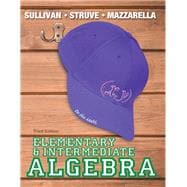ALERT: Before you purchase, check with your instructor or review your course syllabus to ensure that you select the correct ISBN. Several versions of Pearson's MyLab & Mastering products exist for each title, including customized versions for individual schools, and registrations are not transferable. In addition, you may need a CourseID, provided by your instructor, to register for and use Pearson's MyLab & Mastering products.
Packages
Access codes for Pearson's MyLab & Mastering products may not be included when purchasing or renting from companies other than Pearson; check with the seller before completing your purchase.
Used or rental books
If you rent or purchase a used book with an access code, the access code may have been redeemed previously and you may have to purchase a new access code.
Access codes
Access codes that are purchased from sellers other than Pearson carry a higher risk of being either the wrong ISBN or a previously redeemed code. Check with the seller prior to purchase.
--
This package consists of the textbook plus an access kit for MyMathLab/MyStatLab.The Sullivan/Struve/Mazzarella Algebra program is designed to motivate students to “do the math”– at home or in the lab–and supports a variety of learning environments. The text is known for its two-column example format that provides annotations to the left of the algebra. These annotations explain what the authors are about to do in each step (instead of what was just done), just as an instructor would do.
MyMathLab provides a wide range of homework, tutorial, and assessment tools that make it easy to manage your course online.
0321894162 / 9780321894168 Elementary & Intermediate Algebra Plus MyMathLab -- Access Card Package
Package consists of:
0321654064 / 9780321654069 MyMathLab Inside Star Sticker
0321880110 / 9780321880116 Elementary & Intermediate
0321431308 / 9780321431301 MyMathLab/MyStatLab -- Glue-in Access Card








